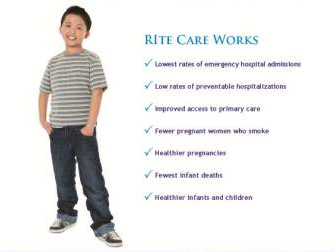
The Providence Student Union, the ACLU, the RI Disability Law Center and 14 other organizations with a vested interest in equitable public education in the Ocean State are formally asking RIDE to stop using the NECAP test as a graduation requirement.
“The new Board of Education has never had the opportunity to fully discuss, much less take a position on, the actions of its predecessor – the Board of Regents – in approving high stakes testing,” said RI ACLU Executive Director Steve Brown, a frequent contributor to RI Future. “Through this petition, we are hopeful that the Board will take a stand and agree with the many organizations signing this petition that high stakes testing is bad policy.”
Board of Education Chairwoman Eva Mancuso told RI Future in May that the new board would reconsider the policy.
“I think that’s an important issue to come before the board,” she told me in May. “I certainly want to look at that issue.”
She also said: “I don’t think it’s the best test.” And added, “40 percent of kids are not going to not graduate from high school if I have anything to do about it.”
Using the NECAP test as a graduation requirement has emerged as one of the most controversial initiatives of Deborah Gist’s embattled tenure as education commission of Rhode Island.
Not only has using high stakes tests as a graduation requirement become more controversial across the country, the issue is further strained in Rhode Island because there are unanswered questions about the validity of the NECAP test in particular to measure individual student performance.
Tom Sgouros, Rick Richards and other RI Future contributors have painstakingly detailed how it is designed to measure school, not individual aptitude. The Providence Student Union made national news when it challenged adults to take a version of the NECAP test.
Here’s the full press release sent from the Providence Student Union today:
A coalition of 17 organizations representing youth, parents, the disability community, civil rights activists, college access organizations and other constituencies have filed a formal petition with the state Board of Education to initiate a public rule-making process over a proposal to rescind Rhode Island’s controversial new high-stakes testing graduation requirement. Under the Administrative Procedures Act, the Board will have 30 days to respond to the petition.
“The clock is ticking, and the futures of literally thousands of Rhode Island teens are hanging in the balance,” said Steven Brown, ACLU of RI Executive Director. “The new Board of Education has never had the opportunity to fully discuss, much less take a position on, the actions of its predecessor – the Board of Regents – in approving high stakes testing. Through this petition, we are hopeful that the Board will take a stand and agree with the many organizations signing this petition that high stakes testing is bad policy.”
Questions about the validity of high stakes testing as a graduation requirement have been a source of great concern and debate in recent months. In a cover letter accompanying the petition, the organizations echoed the views of many students and teachers that, rather than educating students, the policy has led to too much time being spent teaching to the test. In fact, earlier this month RIDE supported legislation that explicitly authorizes school districts to pull students out of core classroom instruction to prep for the test, if doing so is deemed to be in the student’s “best interest.” The groups also point to RIDE’s own failure to meet 32 of 33 goals it set for itself in improving achievement for traditionally vulnerable students as “ample proof of the validity of our concerns.”
RIDE has repeatedly assured worried parents that many students at risk of not graduating need not fear the testing requirement. But the signatories, like many citizens across the state, remain concerned – especially for the significant cohort of ELL and special education students.
“Use of high-stakes testing has a disproportionate impact on students with disabilities and is counter to what we know works best for these students,” said Anne Mulready, supervising attorney at the RI Disability Law Center. “Our state and school districts have made significant investments in building the capacity to provide individualized instruction for students with disabilities that focuses on individual student strengths and learning styles, as required by federal and state law. But these investments are being needlessly squandered by the use of a high-stakes test to determine who gets a high school diploma.”
The Board of Education has been in existence for six months, but has never formally discussed or voted on this controversial requirement, despite the extensive public comment the subject has received at Board meetings. Under the Administrative Procedures Act, the Board has thirty days to initially respond to the petition, either by denying or it by initiating a public rule-making process, where testimony will be accepted and the Board can, as the groups note, “consider in a timely but deliberate manner whether to accept, modify, or reject this proposal.”
As Hector Perea, a member of the Providence Student Union noted, “The petition does not make the Board take a stand on high-stakes testing. It just pushes the Board to start a public process where they have to, at the very least, think about whether to debate the issue. We think the thousands of concerned students and parents of Rhode Island deserve at least that.”
Among the groups signing the petition are The Autism Project, Children’s Policy Coalition, College Visions, NAACP Providence Chapter, Providence Student Union, ACLU of Rhode Island, Rhode Island Disability Law Center, Rhode Island Teachers Of English Language Learners, Urban League of Rhode Island, and Youth in Action.



